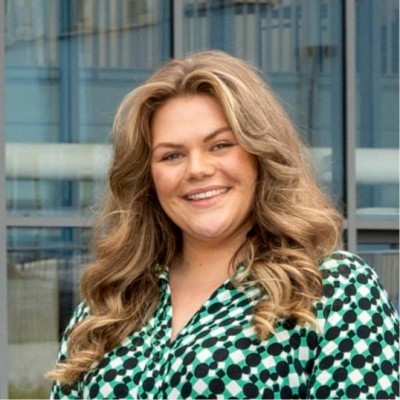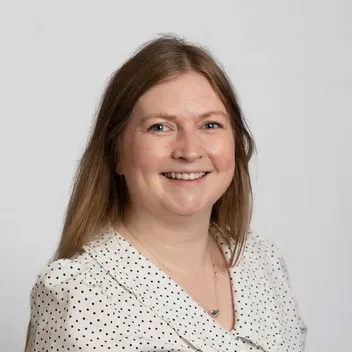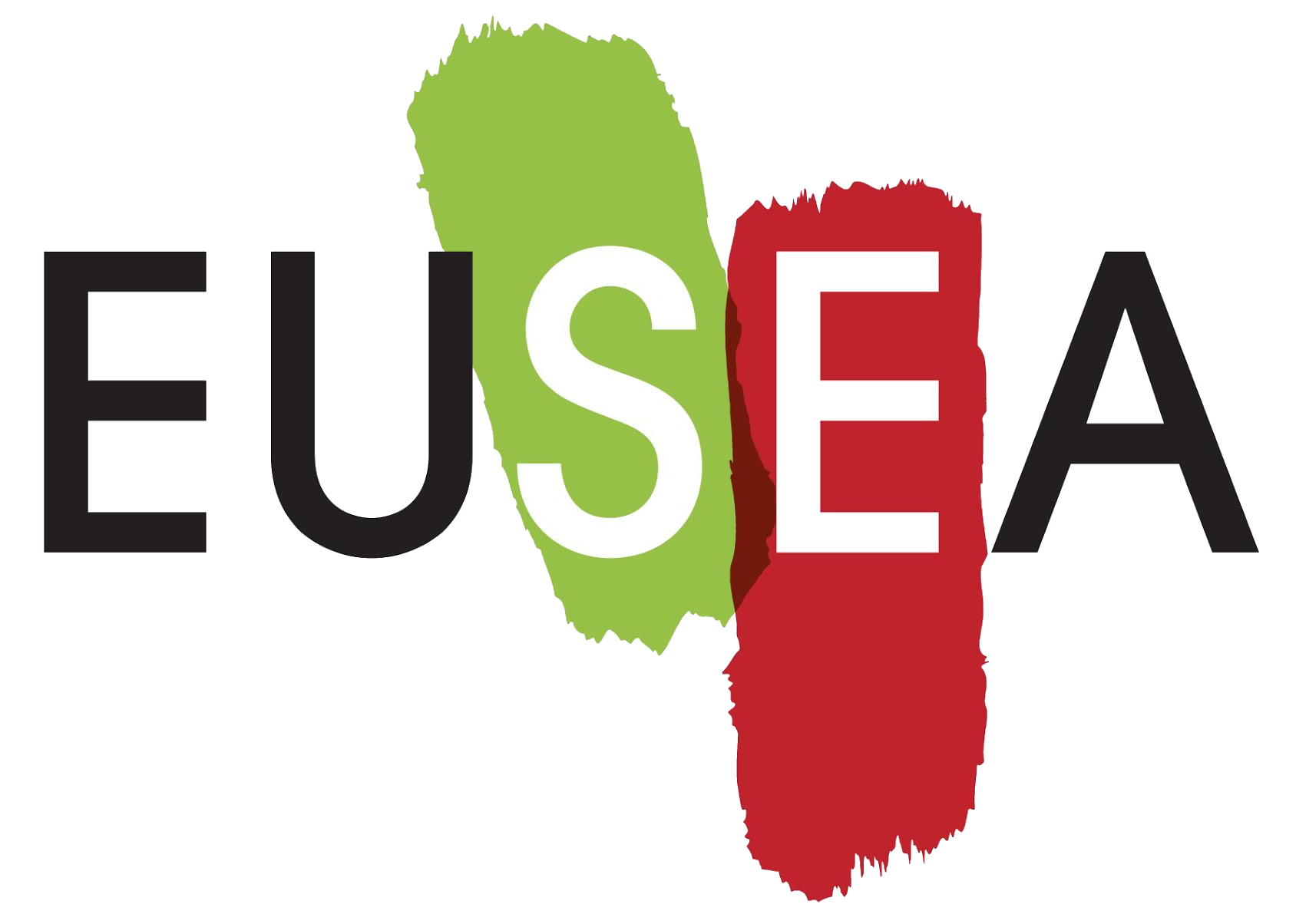Beyond the Algorithm
What Role Does Social Media Play in Science Communication Today?
On November 26, we hosted the second session of our Public Engagement Hotspots, an online space where community members can exchange ideas, share challenges, and discuss emerging issues in science communication and public engagement.
In this session, we joined you in exploring the complex world of social media, science engagement, and public engagement. In our virtual kitchen, we welcomed three EUSEA colleagues with extensive experience in using social media to connect with audiences and in collaborating with researchers to present their work in engaging ways on these platforms. Moderated by EUSEA Board Member Sara Verstraeten, she was joined by this month’s chefs:
Rebecca Wilson

Rebecca Wilson – Director of Research, Policy and Education – The Rediscovery Centre
Rebecca Wilson is Director of Research, Policy, and Education at the Rediscovery Centre, Ireland’s National Centre for the Circular Economy. She previously worked at Research Ireland, where she played a pivotal role in strengthening the national research landscape through strategic public engagement, cross-sector collaboration, and evidence-informed policy development.
Rebecca has led flagship national initiatives, including Science Week and Creating Our Future, building strong connections between researchers, policymakers, industry, and communities to ensure research delivers meaningful societal impact.
Passionate about making complex ideas accessible and relevant, she has a proven track record of translating research insights into actionable policy recommendations. In her current role, Rebecca applies this expertise to advancing sustainability goals, fostering innovation, and supporting Ireland’s transition to a more resource-efficient, circular economy.
Heather Doran

Heather Doran – Public Engagement Manager – University of Dundee
Heather Doran is the Public Engagement Manager at the Leverhulme Research Centre for Forensic Science, University of Dundee. She joined the Centre soon after it was established and led the creation of the Public Engagement Strategy. The Centre was recognised in 2019 with a Gold Award from the National Coordinating Centre for Public Engagement. The Centre engages with multiple audiences, including members of the public, schools and all parts of the justice system, through a variety of methods including publications, virtual games, experiences and classroom sessions. The Centre has contributed to science festivals around the UK and publishes a popular podcast (Inside Forensic Science).
Heather is an elected member of the international Public Communication of Science and Technology (PCST) committee and is the Programme Chair for the PCST Network 2025 which will take place in the UK for the first time. In 2015/2016 she was awarded a Winston Churchill Memorial Trust Travel Fellowship on the communication of science travelling to the USA, Japan and China to explore how major research institutes and individual researchers help foster online engagement through social media. Previously she was the Science Editor for The Biochemist. Heather began her involvement in public engagement during her PhD in molecular pharmacology at the University of Aberdeen when she was Editor and co-founder of Au Science Magazine.
Sam Van Gele

Sam Van Gele – Max-Planck Institute for Solid State Research
Keeping with the food theme- as always- here are some of the “takeaways” from this discussion:
🌐 A Fast-Changing Social Media Landscape
Heather opened the discussion by charting the evolution of social media in public engagement.
What began as a handful of platforms offering consistent reach has become a fragmented ecosystem of niche apps, rapid algorithm changes, shifting user demographics, and heightened expectations.
Key points included:
-
Fragmentation requires diversification: No single platform is enough; comms teams must tailor content across multiple channels.
-
Funding matters: Effective, sustained online engagement requires time, skills, and resources — not just “posting more”.
-
Authenticity reduces risk: Being transparent about who you are and why you’re sharing builds trust and lowers the pressure many professionals feel when posting on behalf of institutions.
Heather also reflected on the mental load of social media work, emphasising that science communicators often juggle public scrutiny, platform volatility, and the responsibility of accurate messaging.
👥 Reaching and Engaging Young People
Rebecca shared insights from coordinating social media during Science Week Ireland, where reaching younger audiences is both essential and challenging.
Her expanded talking points:
-
Youth engagement demands platform fluency: TikTok, YouTube Shorts, and Instagram Reels dominate teenage media habits.
-
Influencer engagement works — when it’s authentic: Early experiments using rigid briefs produced stiff, uninspired content. Today, her team prioritises conversations with creators, co-developing content rooted in the influencer’s authentic style.
-
Short-form video is powerful: They saw notable engagement increases when shifting from static posts to dynamic, personality-driven clips.
-
Email newsletters aren’t dead: For teachers, parents, and community partners, newsletters continue to outperform social media.
Rebecca emphasised that science content doesn’t need to “dumb down” — it needs to meet audiences where they are, in formats they naturally use.
🎥 Blending Personality and Science: Lessons from Smash Science
Sam drew from his experience running Smash Science, a Swiss-focused science news channel for younger audiences.
His approach emphasises:
-
The power of personality: Viewers respond more to people than institutions; showing humour and curiosity increases engagement.
-
Entertainment + substance: Fun, relatable content can open the door to deeper science stories.
-
Youth perspectives matter: Regular visits to Swiss high schools revealed that teens’ media habits shift rapidly and unpredictably — requiring constant adaptation.
-
Algorithms reward consistency: High-quality posting loses effectiveness without regular schedules, making social media labour-intensive.
He also spoke candidly about the tensions between “viral potential” and scientific integrity — noting that science rarely fits neatly into platform incentives.
💬 Audience Questions, Insights & Shared Experiences
Participants contributed actively, raising practical concerns and exchanging ideas. Key themes included:
“Do we really need to be everywhere?”
Several participants expressed fatigue with the pressure to manage multiple channels.
The panel agreed: No organisation needs to be on every platform. Instead, teams should choose platforms that align with their mission, capacity, and audience.
Balancing organisational voice with personal authenticity
Attendees shared experiences of tension between institutional tone and the more informal style that performs well online.
Panelists encouraged experimenting with “human-centred” narratives while remaining aligned with institutional values.
Handling misinformation and polarisation
Audience members asked how communicators can respond to misleading or aggressive comments.
Panelists recommended:
-
setting clear moderation guidelines
-
avoiding reactive arguments
-
focusing on proactive, clear, values-driven communication
Measuring meaningful impact
Many expressed frustration with vanity metrics (likes, impressions).
The panel highlighted alternatives such as:
-
audience retention
-
qualitative feedback
-
long-term engagement patterns
-
teacher/educator uptake
-
content reuse or referencing
Complementary strategies beyond social media
The audience reinforced a major theme: social media is a tool, not the whole toolbox.
Workshops, newsletters, school visits, live events, and community partnerships remain essential for deeper engagement.
🤝 A Community of Practice, Not Perfection
The session highlighted a shared truth: effective digital engagement is messy, fast-changing, and full of trial and error.
Yet the Hot Pot demonstrated the value of learning together — comparing notes, sharing tools, and acknowledging challenges openly.
Participants were invited to share their thoughts, questions, and…. most importantly…. memes on the following Padlet. If you would like to see or add to this board, please click here.
And if you want to catch up on the full discussion, you can watch the entire thing below. But, if you want to head outside and touch some grass instead, go do that first!





